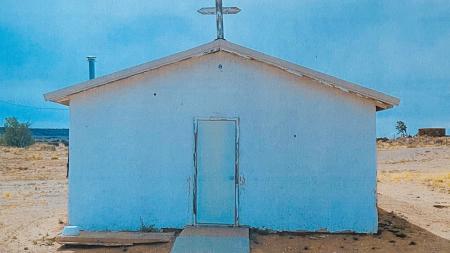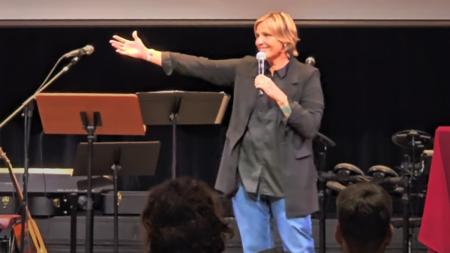Leaders Discuss Scenarios of Church Abuse

“Sometimes churches don’t know how to begin to assess ways to prevent abuse,” said Amanda Benckhuysen, director of Safe Church Ministry. “When churches don’t have anything in place, they feel as if they have a huge mountain to climb in order to make their church safe.”
With this in mind, Safe Church Ministry recently offered a webinar in which staff sketched out scenarios of abuse situations that could occur in congregations. These types of situations happen more commonly than many people realize, the staff pointed out.
Safe Church invited panelists to provide responses to the scenarios alongside ministry staff. Panelists included Sean Baker of Pastor Church Resources and Tara Boer, Professor of Social Work at Dordt University and a classis Safe Church coordinator, both of whom bring a wealth of experience in working with challenging situations within the church.
During the webinar, Safe Church Ministry focused on a new tool that churches can use to assess how well they are doing at creating safe spaces and places for everyone in the congregation and what areas need additional work.
The tool deals with questions around church culture, establishing and maintaining boundaries, and addressing issues of diversity and inclusion.
“This new tool aims to help churches assess how safe their particular congregation is from abuse in all its forms [sexual, physical, emotional, and spiritual],” said Benkhuysen.
“It also reflects on what steps the leadership, in conversation with a classis Safe Church coordinator/team member, might take to nurture a culture that resists abuse in their congregation.”
In addition, Benckhuysen said, a task force appointed by the CRCNA Council of Delegates has created a Code of Conduct that church leaders will be asked to sign. This code will go before Synod 2022 for final approval.
During the presentation of scenarios and responses, it was clear that the Safe Church Ministry leaders were speaking with a significant degree of experience dealing with churches that have faced a wide variety of abuse.
The first scenario described a situation in which a male church leader had an affair with a woman with whom he was working to develop the structure of the weekly worship service.
“This scenario highlights the issue of power dynamics,” said Sean Baker, a ministry consultant for Pastor Church Resources. “This pastor is in leadership, and unique responsibilities come with that.”
On the one hand, he added, it was good that the church accepted a woman to take on some leadership responsibilities, even if it meant working alongside a male pastor.
“But,” Baker added, “she faced a real problem in the power structure she stepped into.”
In this scenario, said Benckhuysen, “the pastor had the weight of the church behind him. The woman trusted him and allowed all of her defenses to come down. There was no way to engage in a healthy relationship, even if she was the one to cross the boundary. It was his responsibility to maintain it.”
The situation in which the two worked so closely should have prompted other church leaders to ask what might be going on, said Baker. “We had something here in which it should have been clear they were playing with fire.”
To prevent this type of relationship from occurring, churches could create a log to track who meets with whom and how frequently and in what circumstances, said Benckhuysen.
“A log can help to track patterns and behavior” – and it might have helped to prevent what happened between the pastor and the worship planner, she said.
Another scenario sketched the story of a male youth leader who became too intimate with – and sexually abused – one of the young people.
This kind of situation is a circumstance that should involve law enforcement, especially with the help of the church, to investigate what happened, said Tara Boer, associate professor of social work at Dordt University, Sioux Center, Iowa.
“These can be high-risk situations,” she added. “When you hire a youth leader, you need to do a background check and make sure the leader knows your policies.”
At no time should a youth leader be alone with a young person, said Boer.
When this kind of abuse happens, said Benckhuysen, a youth can be turned off from Christianity and church for the rest of their life. “She experiences trauma and shame. How will the church let this person know they love her and want to stand behind her?”
A third scenario described a circumstance in which a pastor and the church council needed to address an allegation from a person who said a church leader had abused them several years earlier.
“The church should validate the victim and listen to what they have to say,” said Boer. “Churches can’t ignore things they are responsible for.”
Baker said it can be hard for a church to deal with an allegation about a circumstance that occurred years ago.
“I can understand that you may not know what to do, but there are Safe Church coordinators who can step in and help,” he said.
It would be important in this kind of circumstance, said Benckhuysen, to be careful about conversations you have, but you need to reach out to victim advocates and cooperate with authorities.
Overall, when addressing situations of abuse, said Boer, “The church is the role model . . . and must be a justice seeker and create a safe space” for victims to come forward and be encouraged to tell their stories.
In addition, said Baker, pastors can use situations of abuse to “highlight the kind of culture the church is trying to create.”
This webinar was the first in a five-part series aiming to equip churches and church leaders in abuse prevention. To learn more about future webinars, visit The Network.
Several Safe Church workshops will also be offered at Inspire 2022 in Chicago, Ill. Register today.


